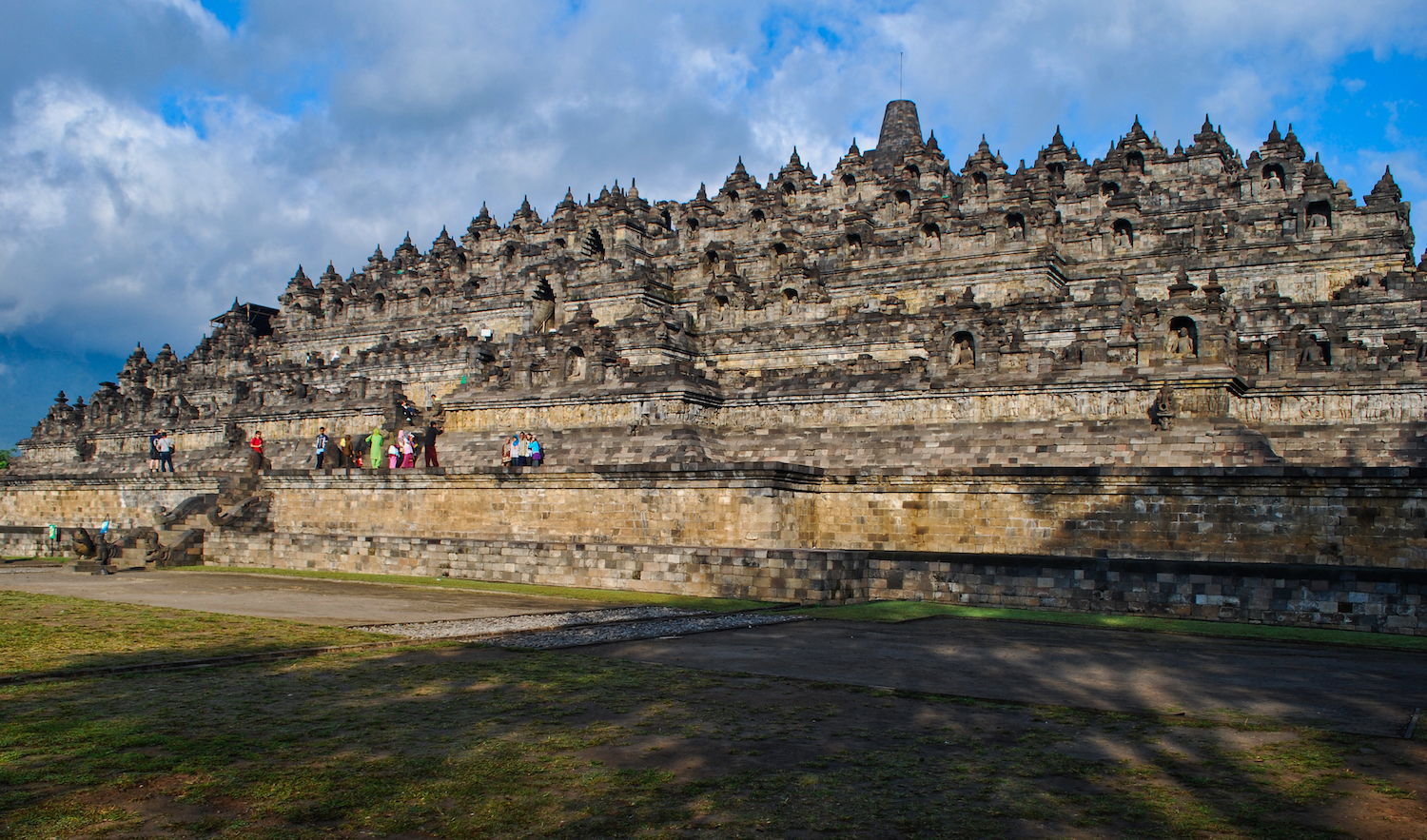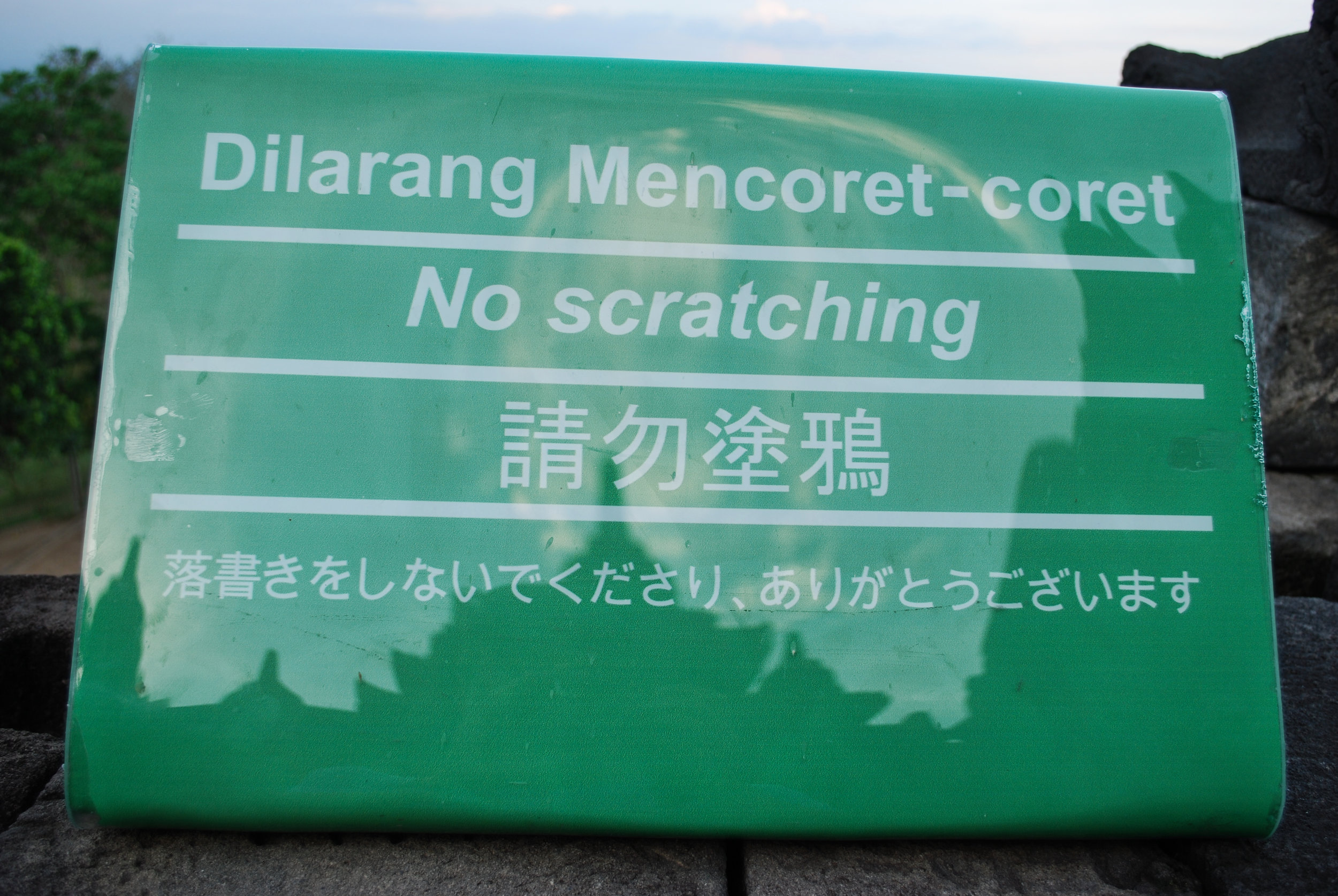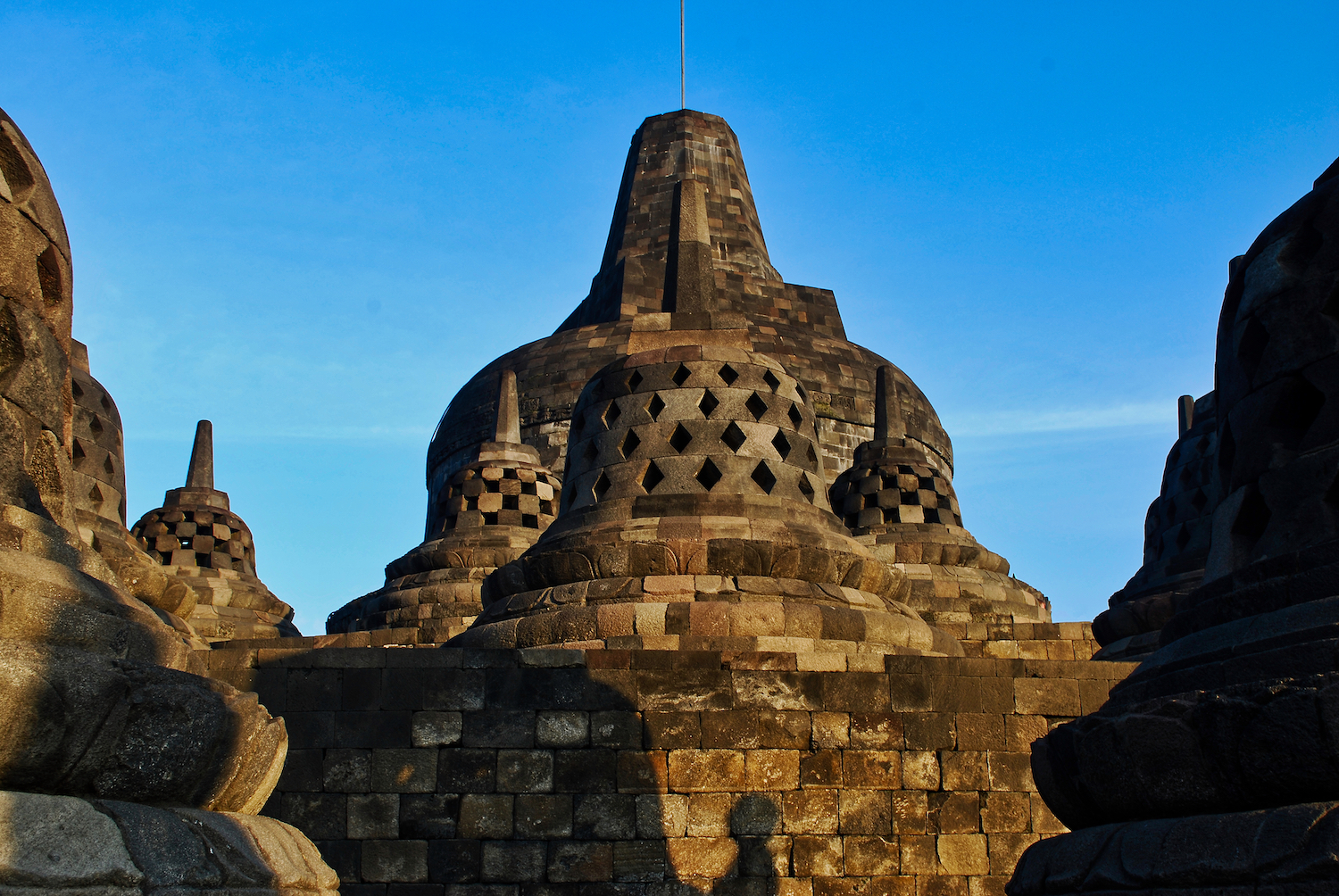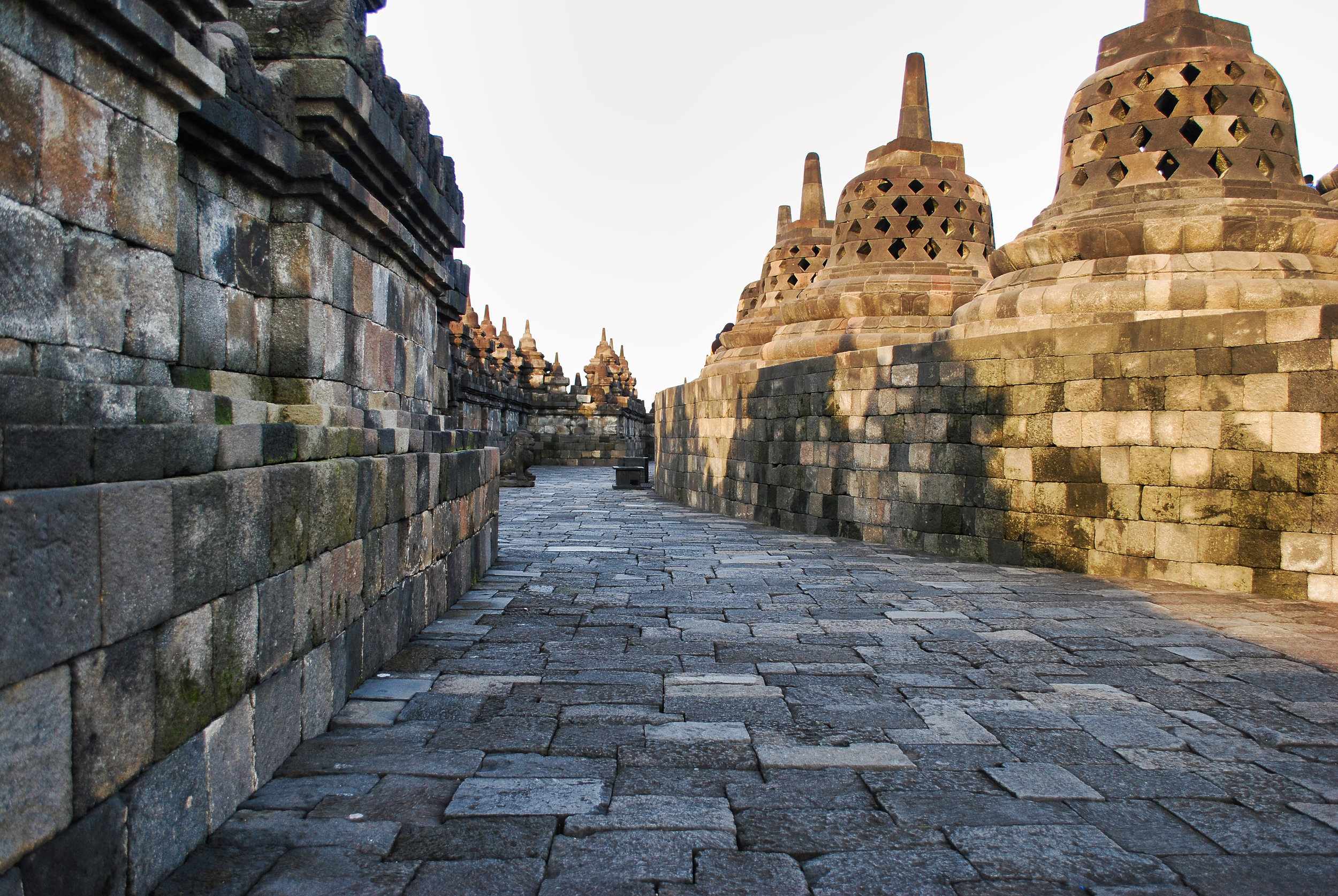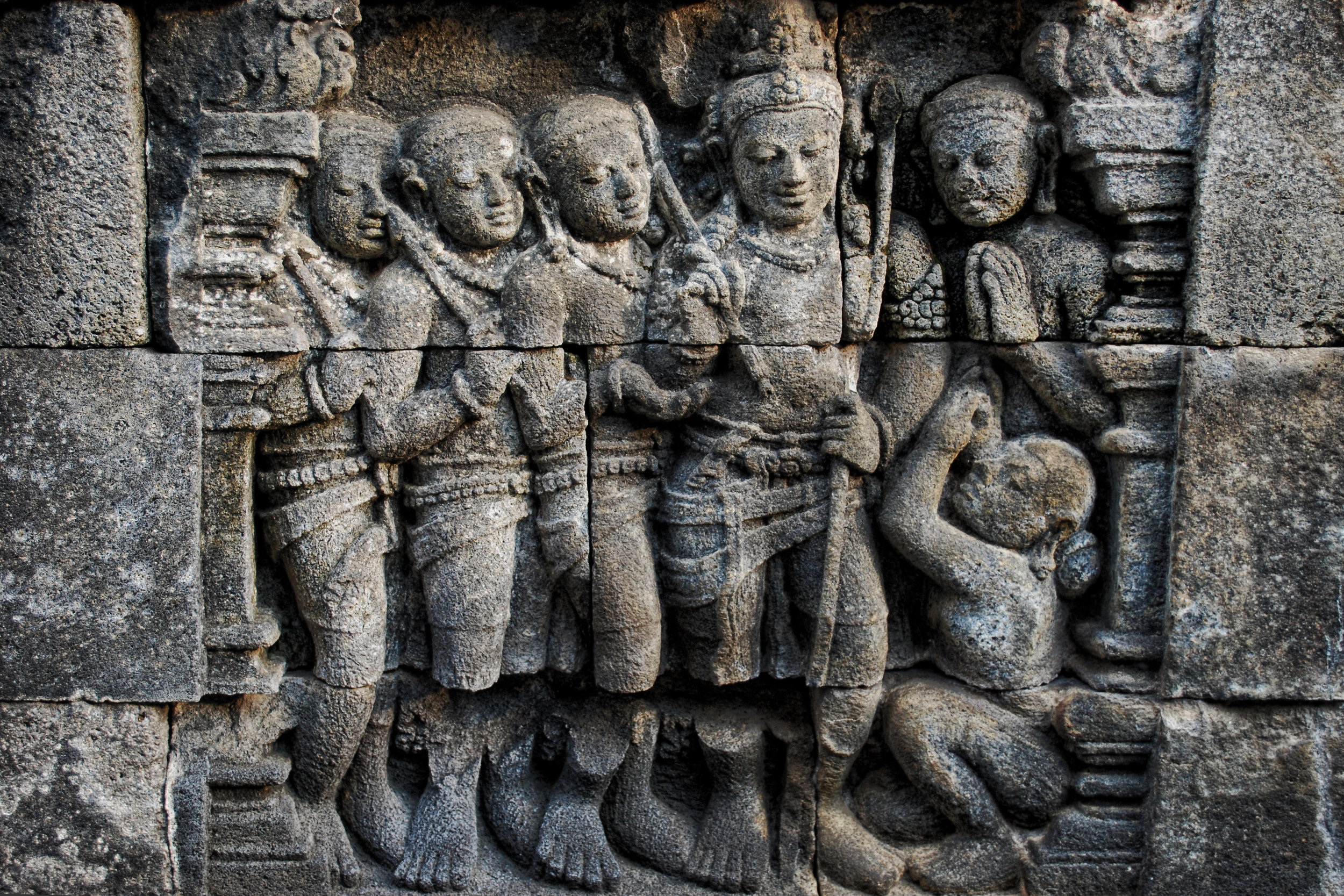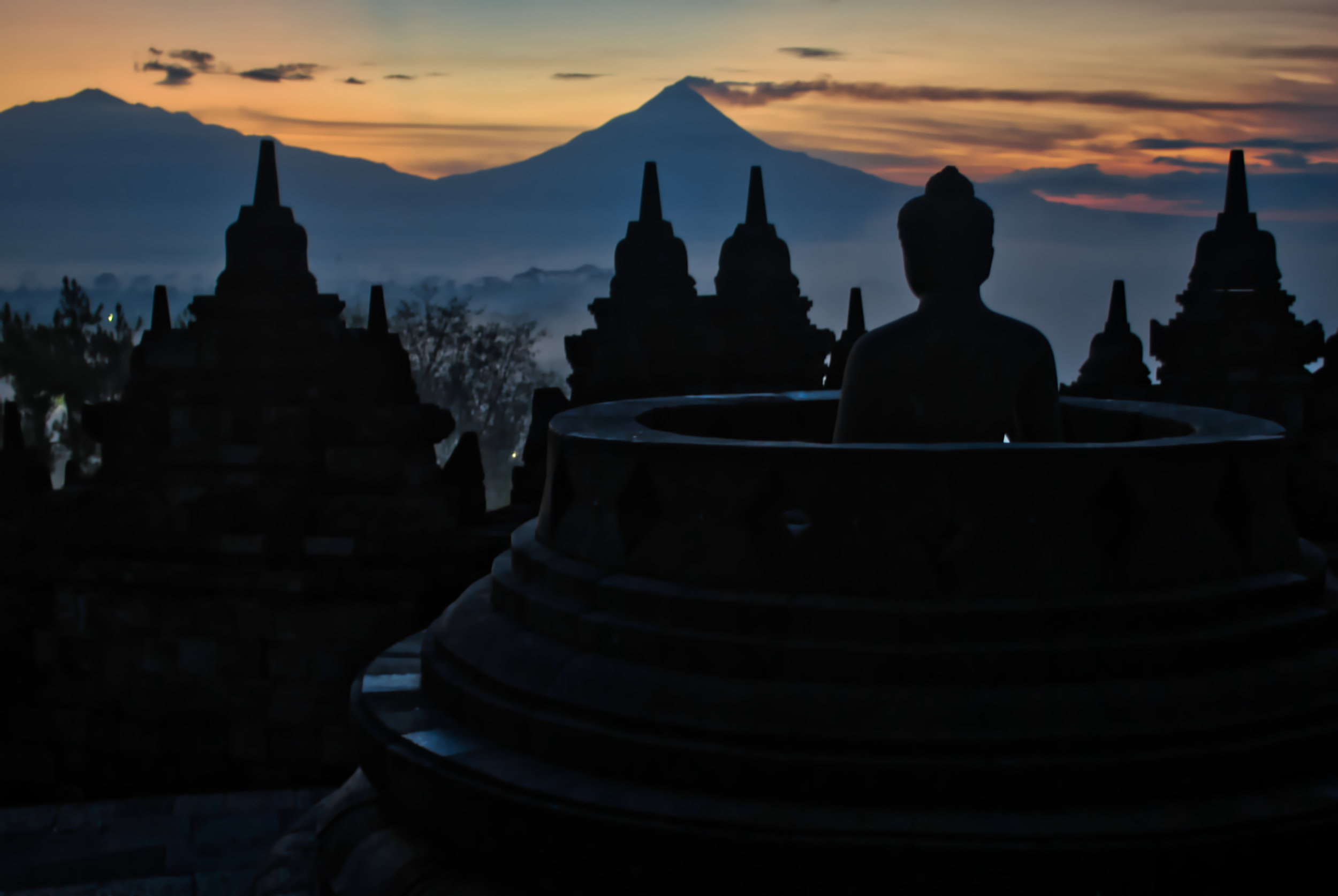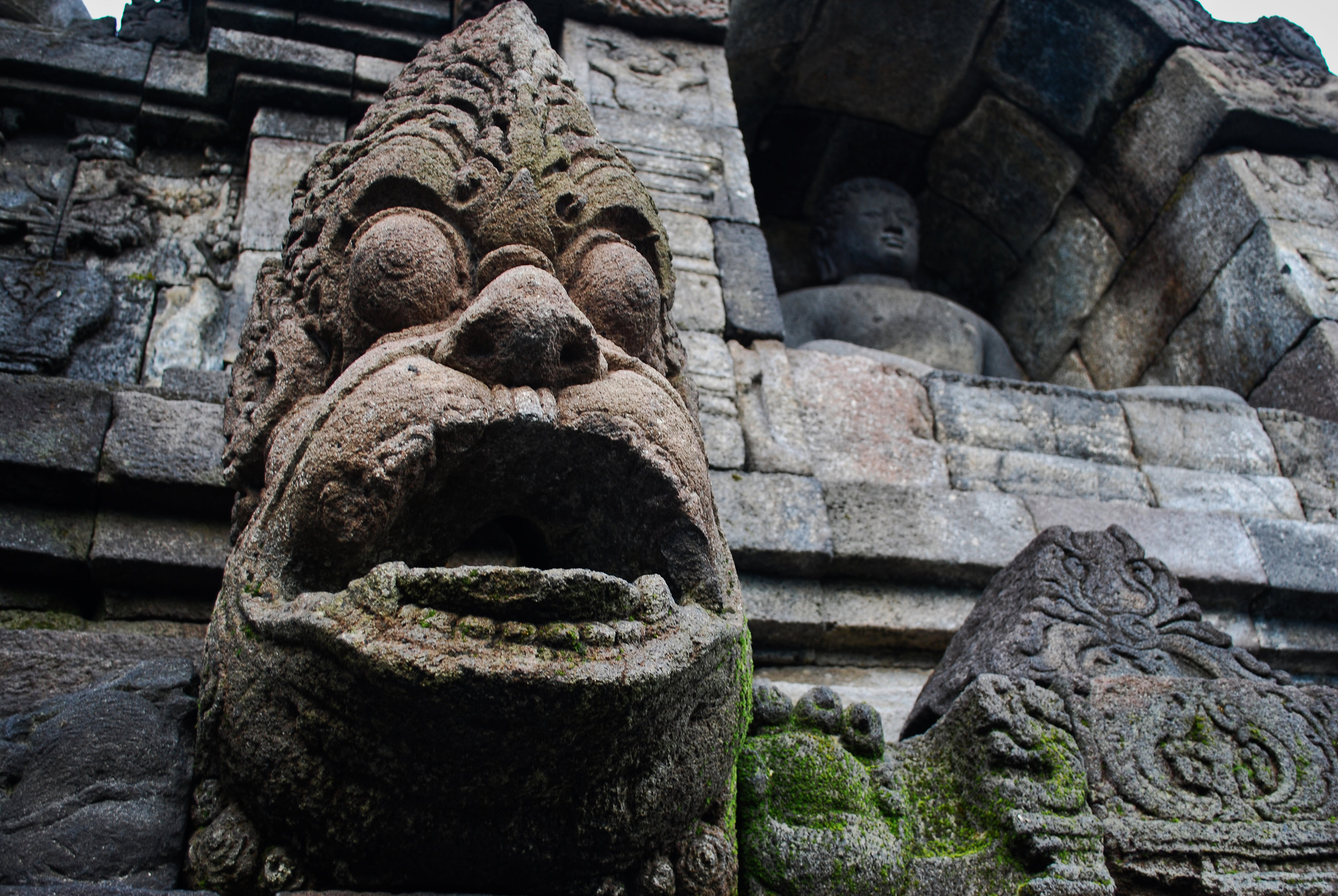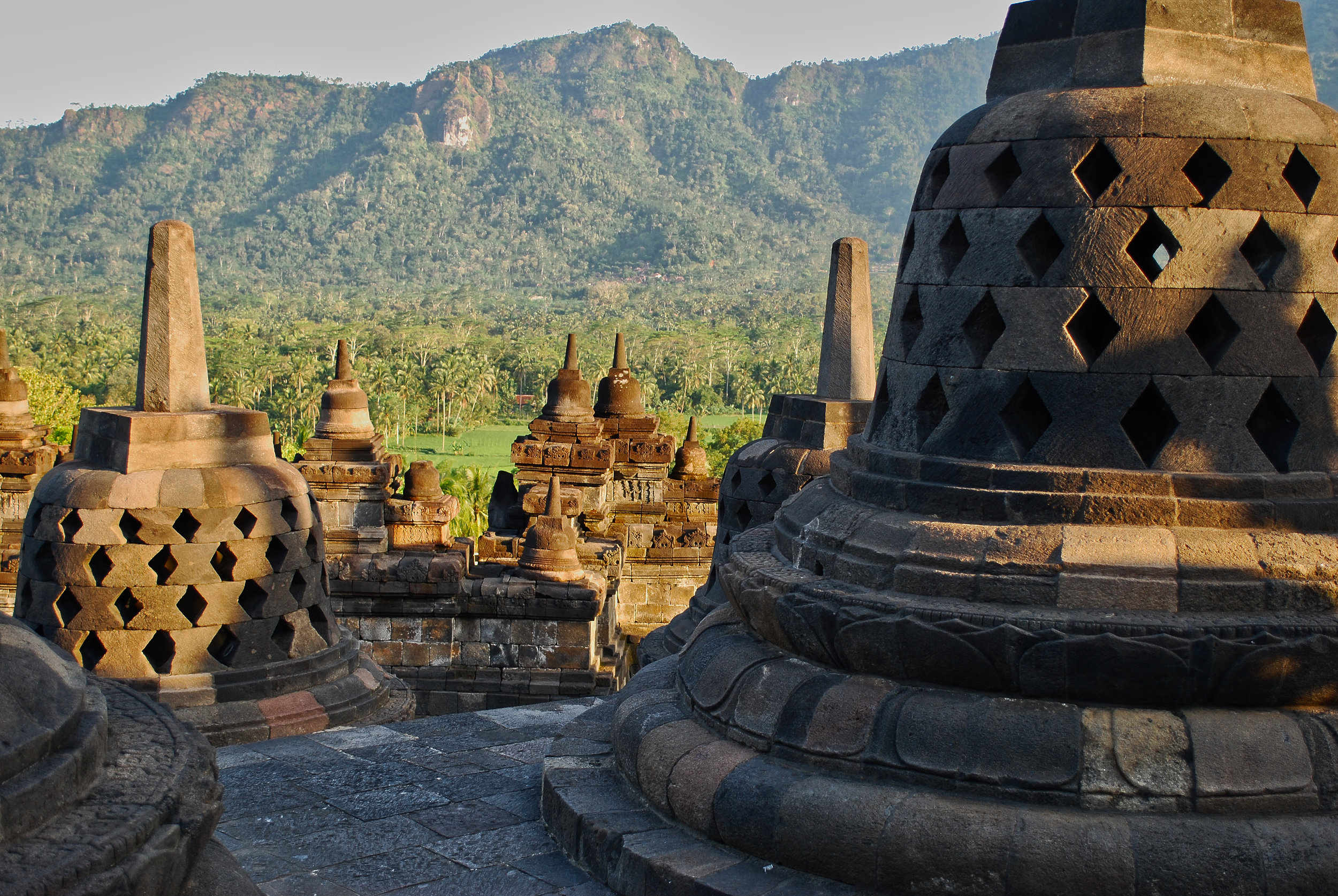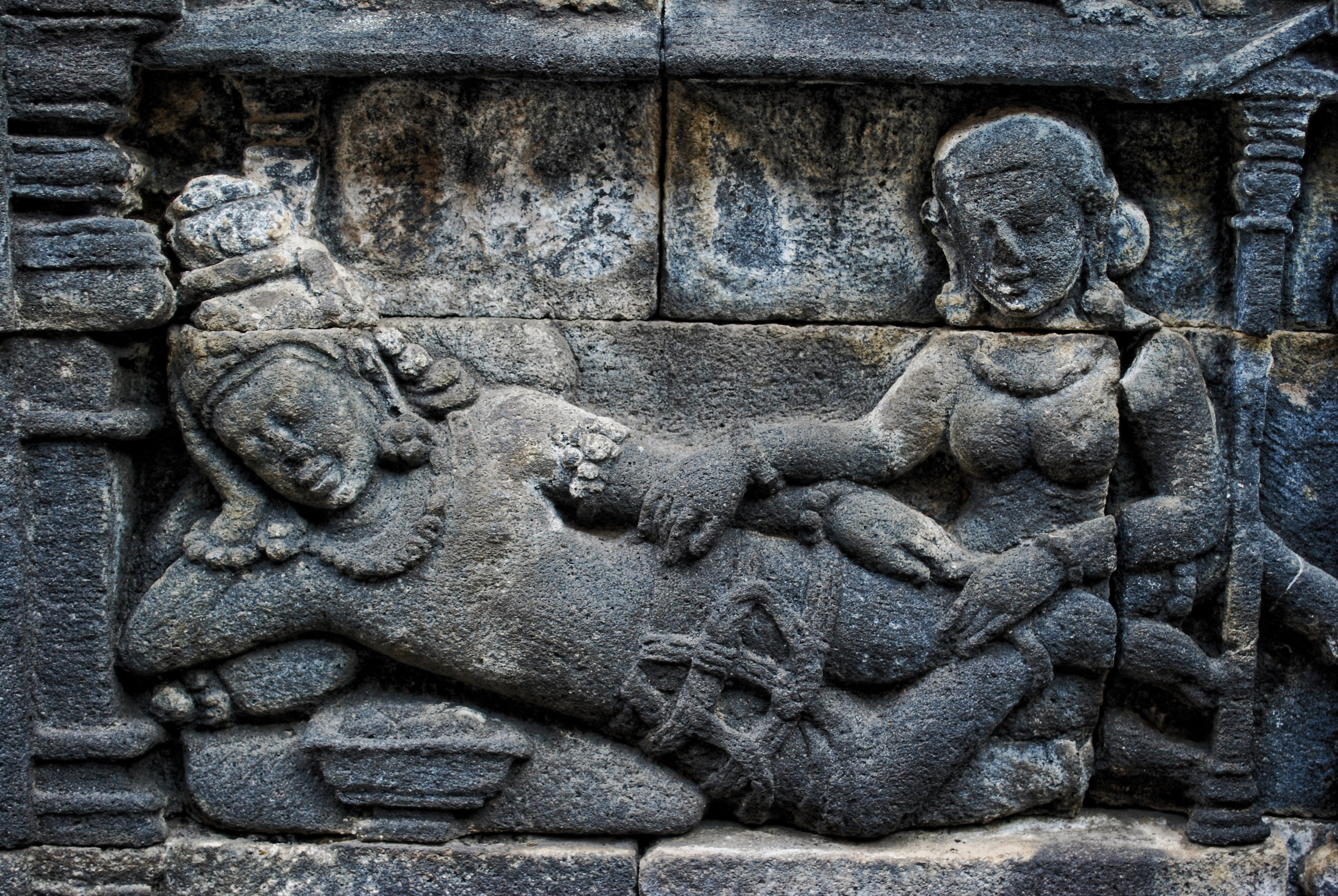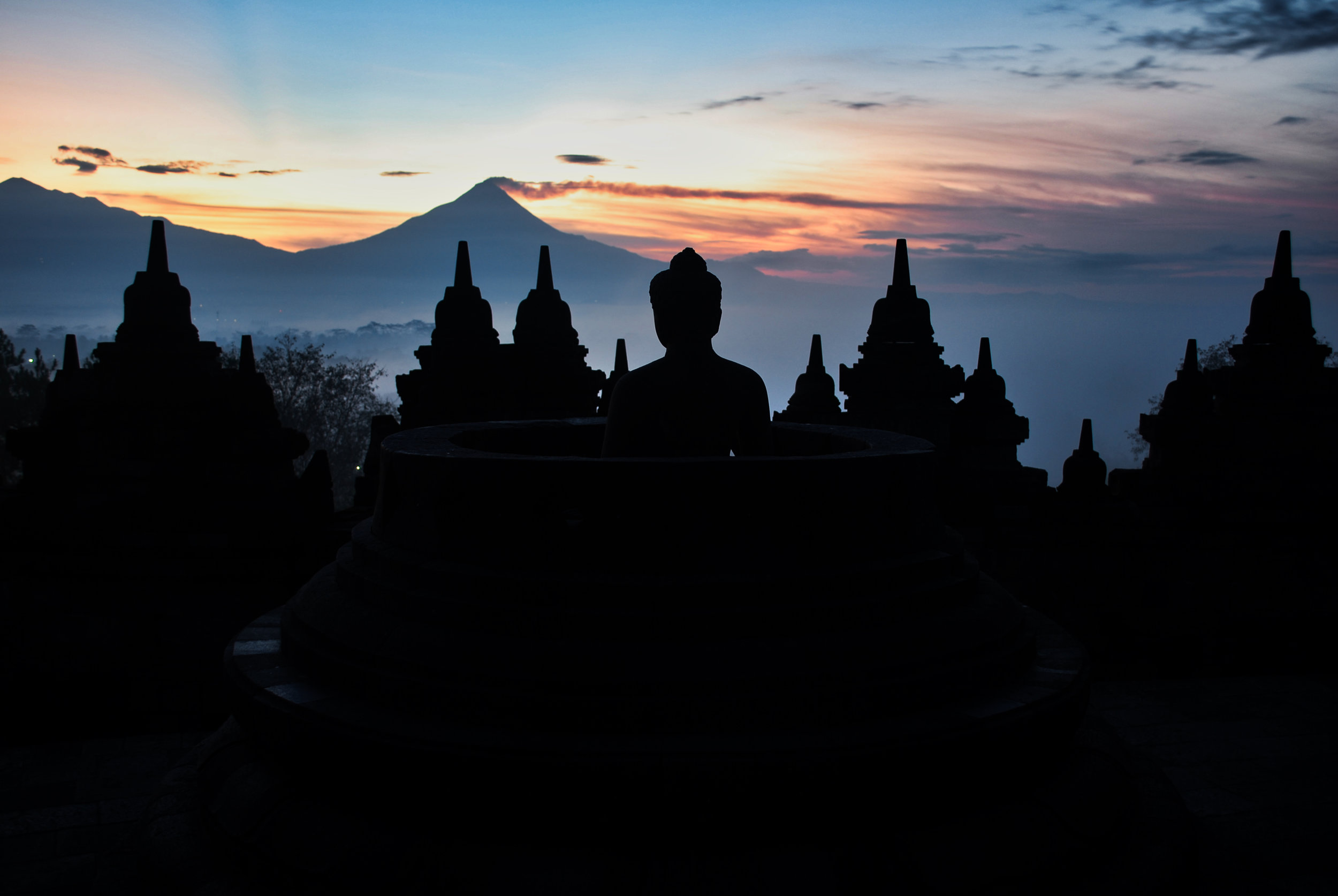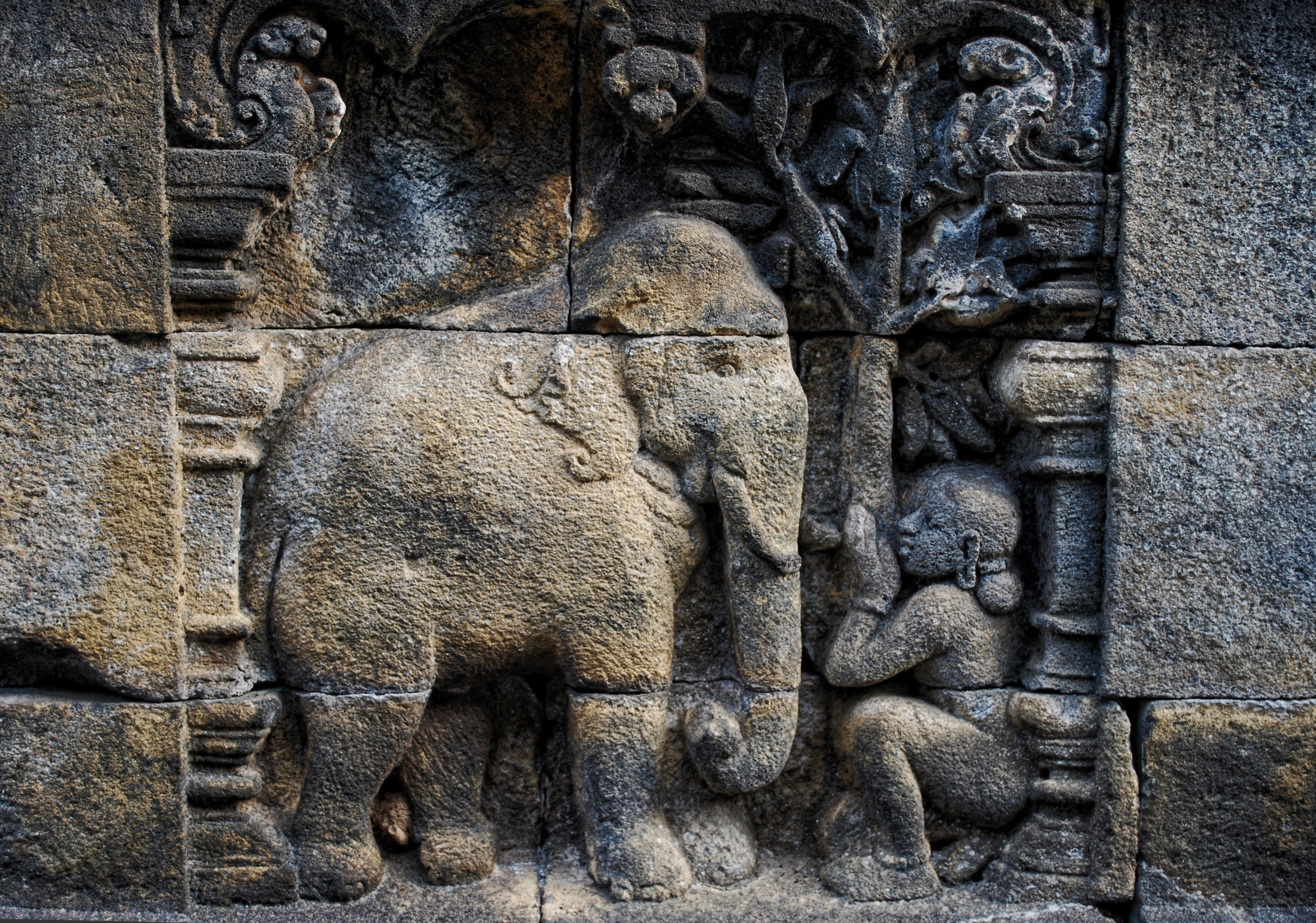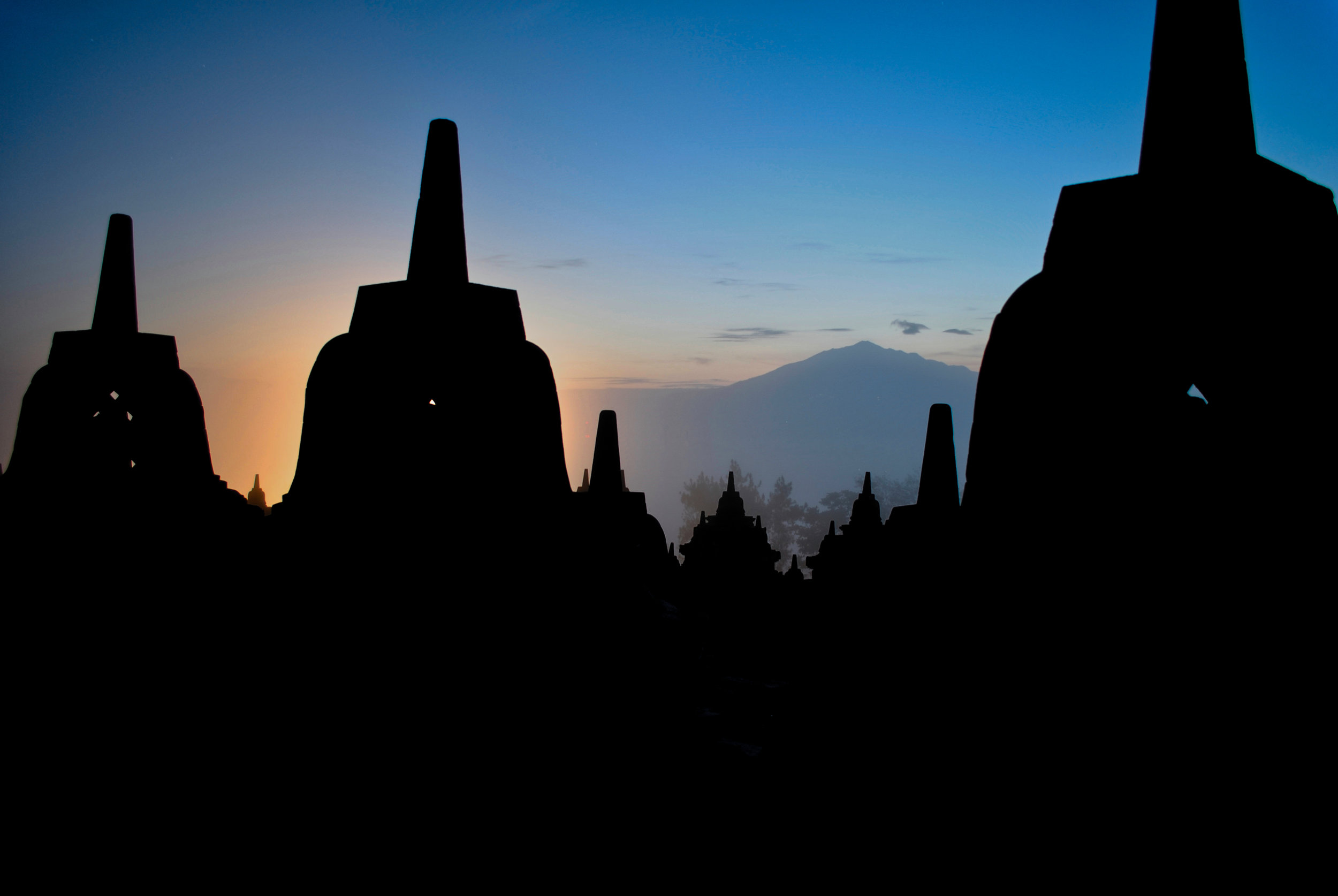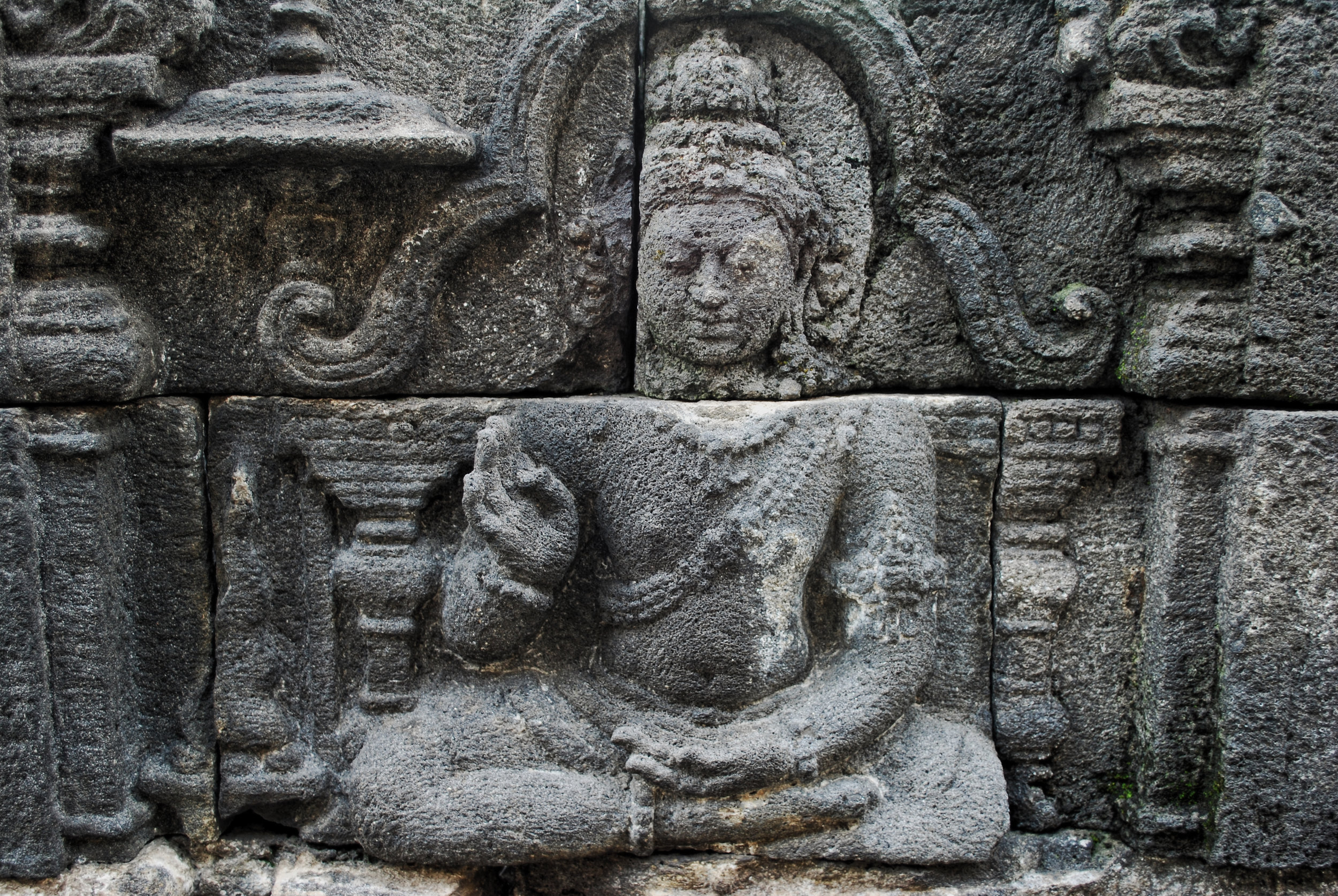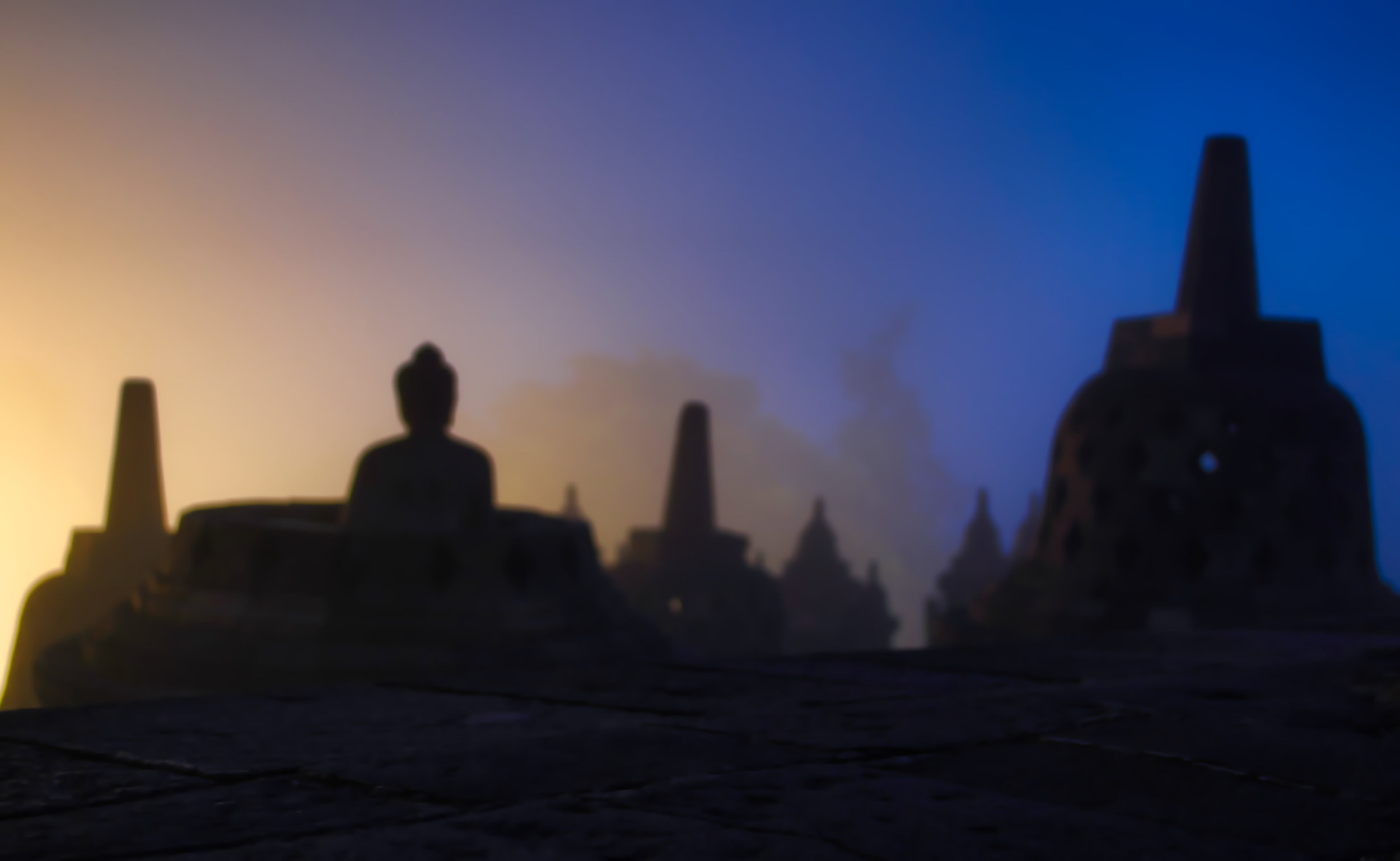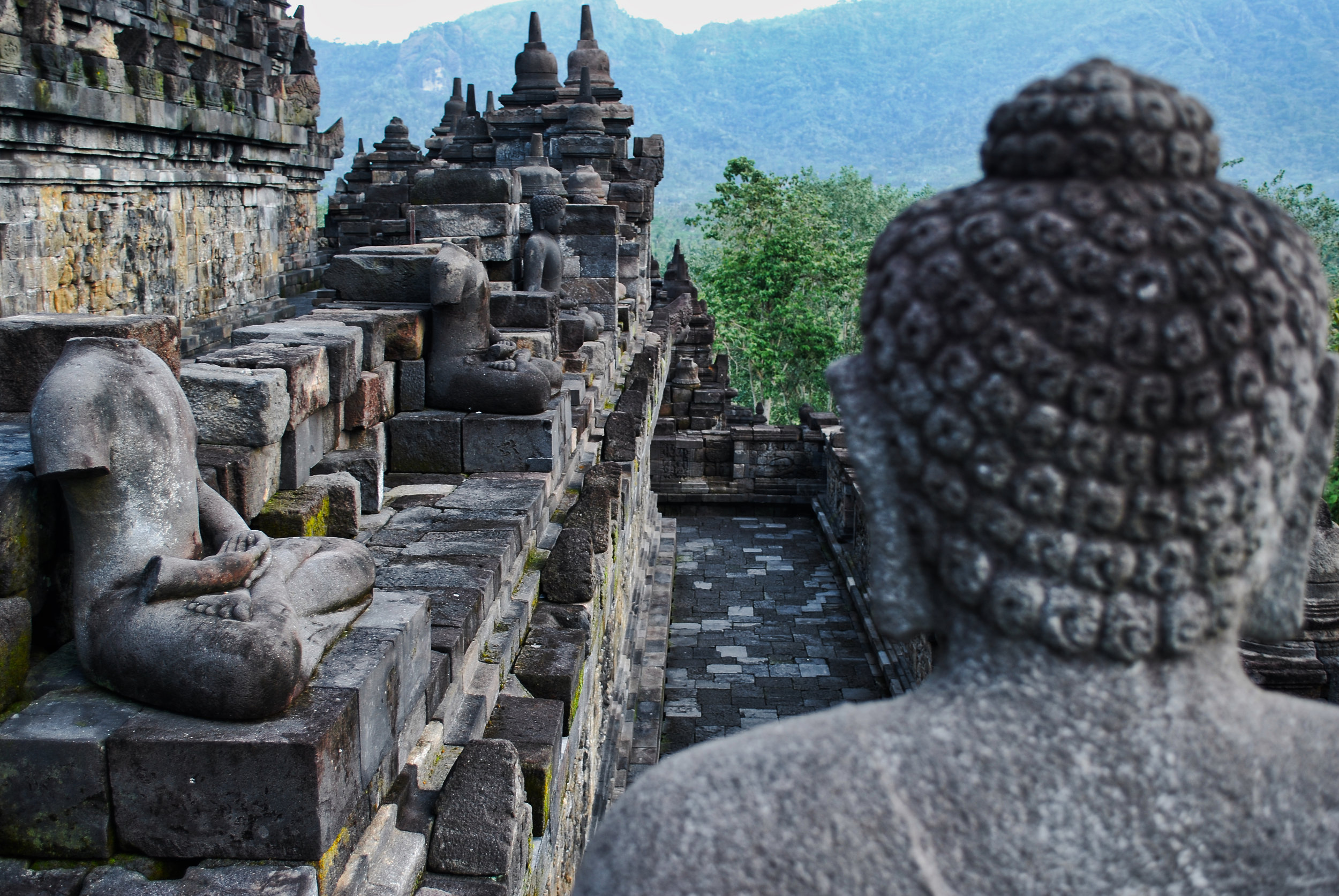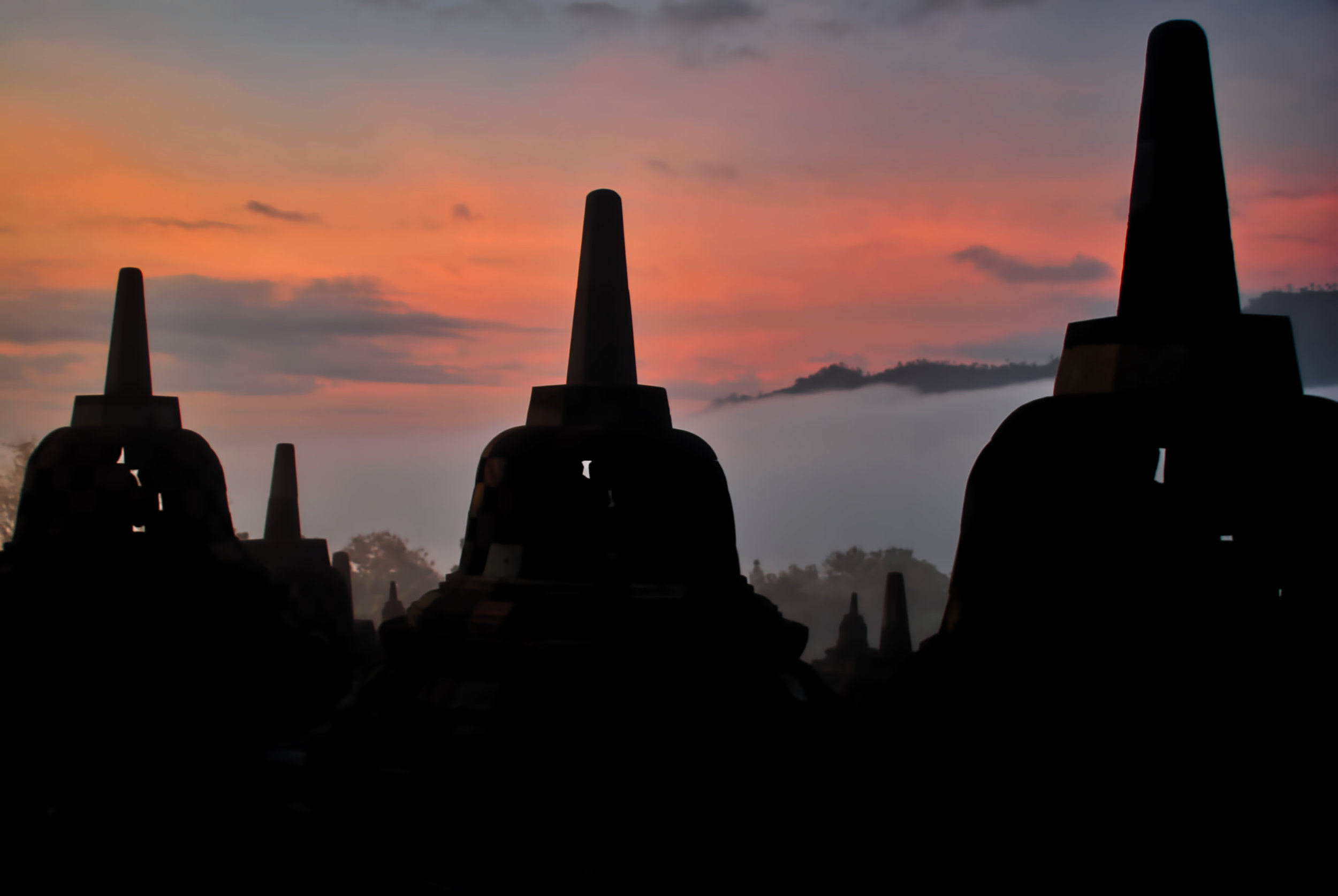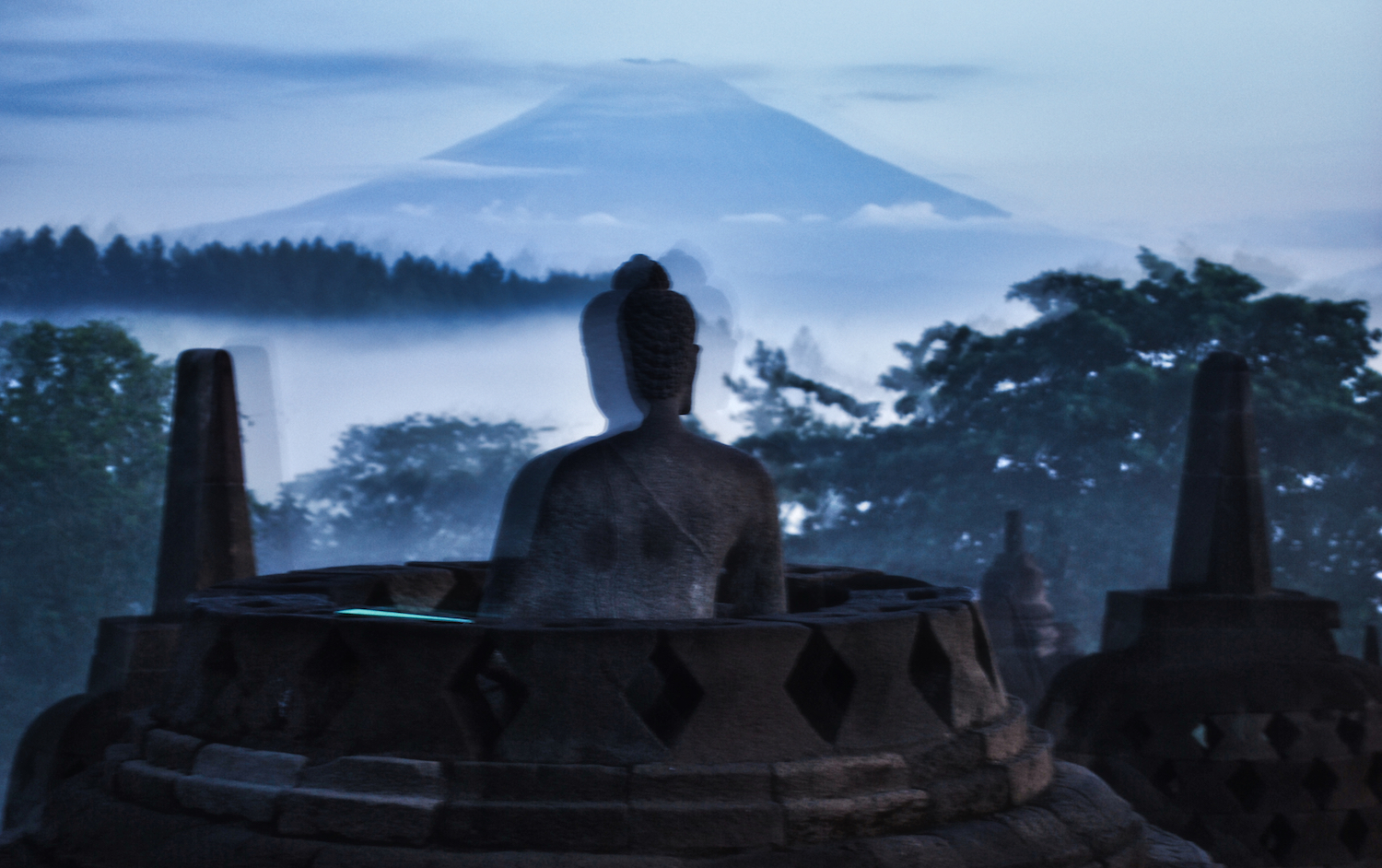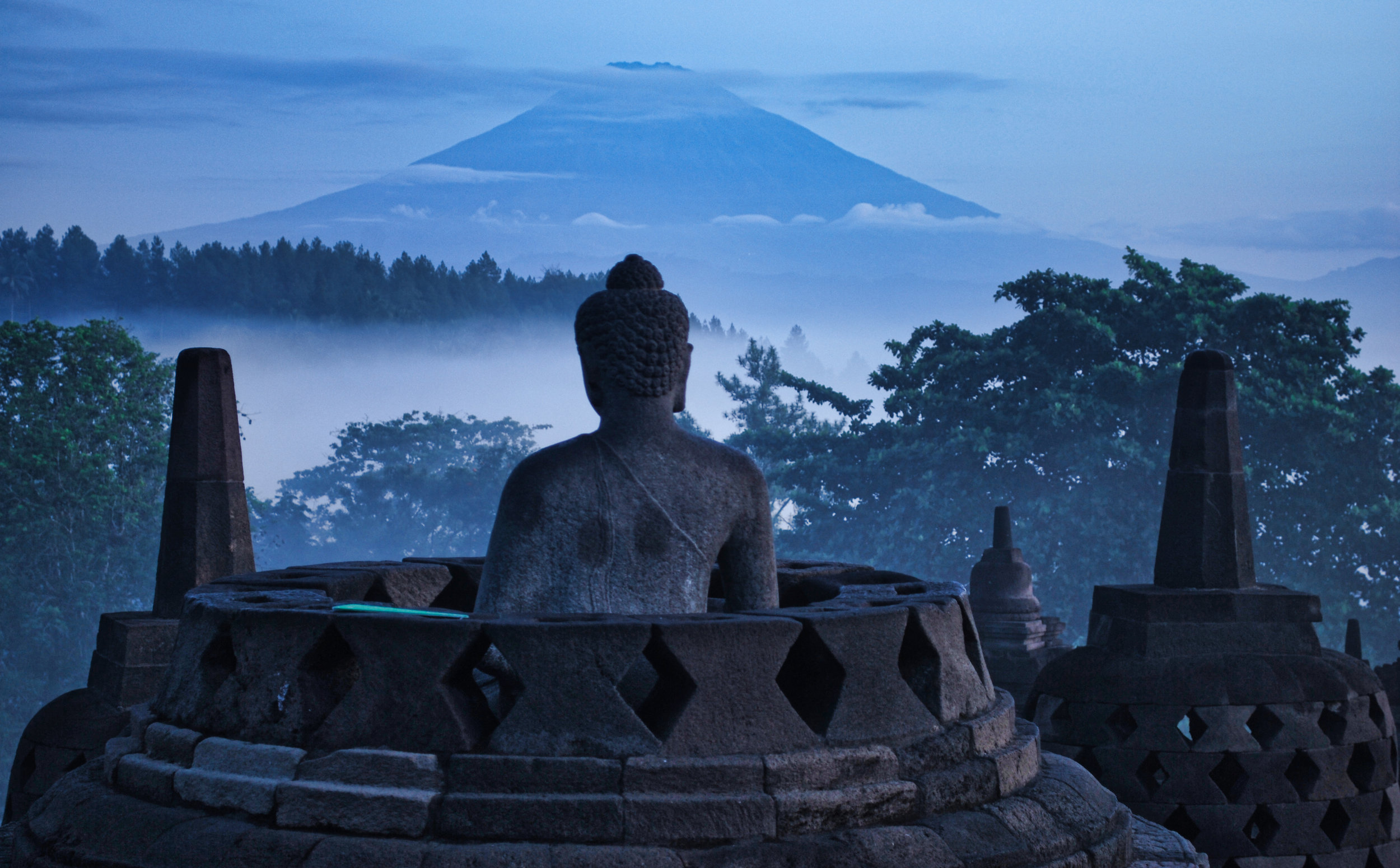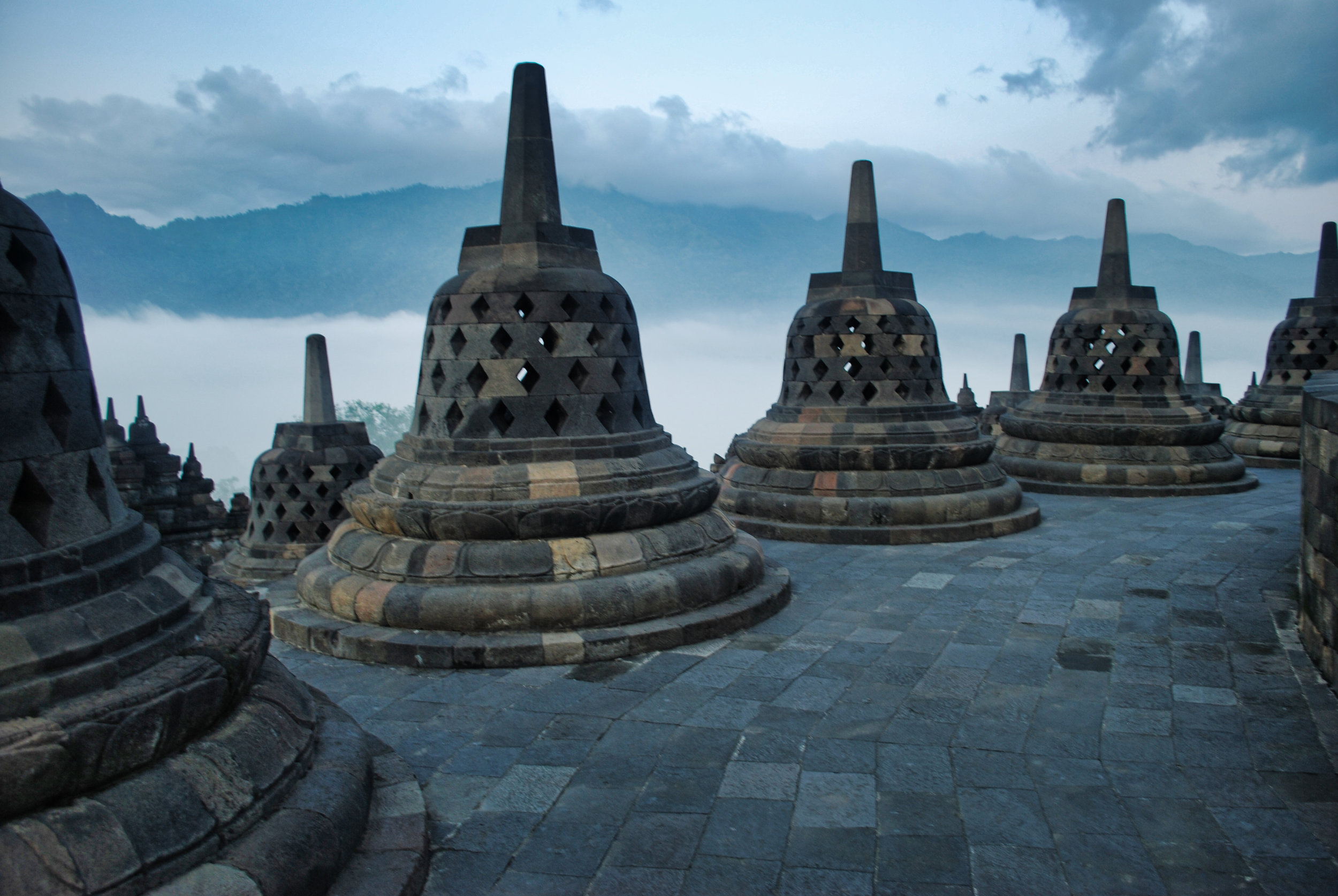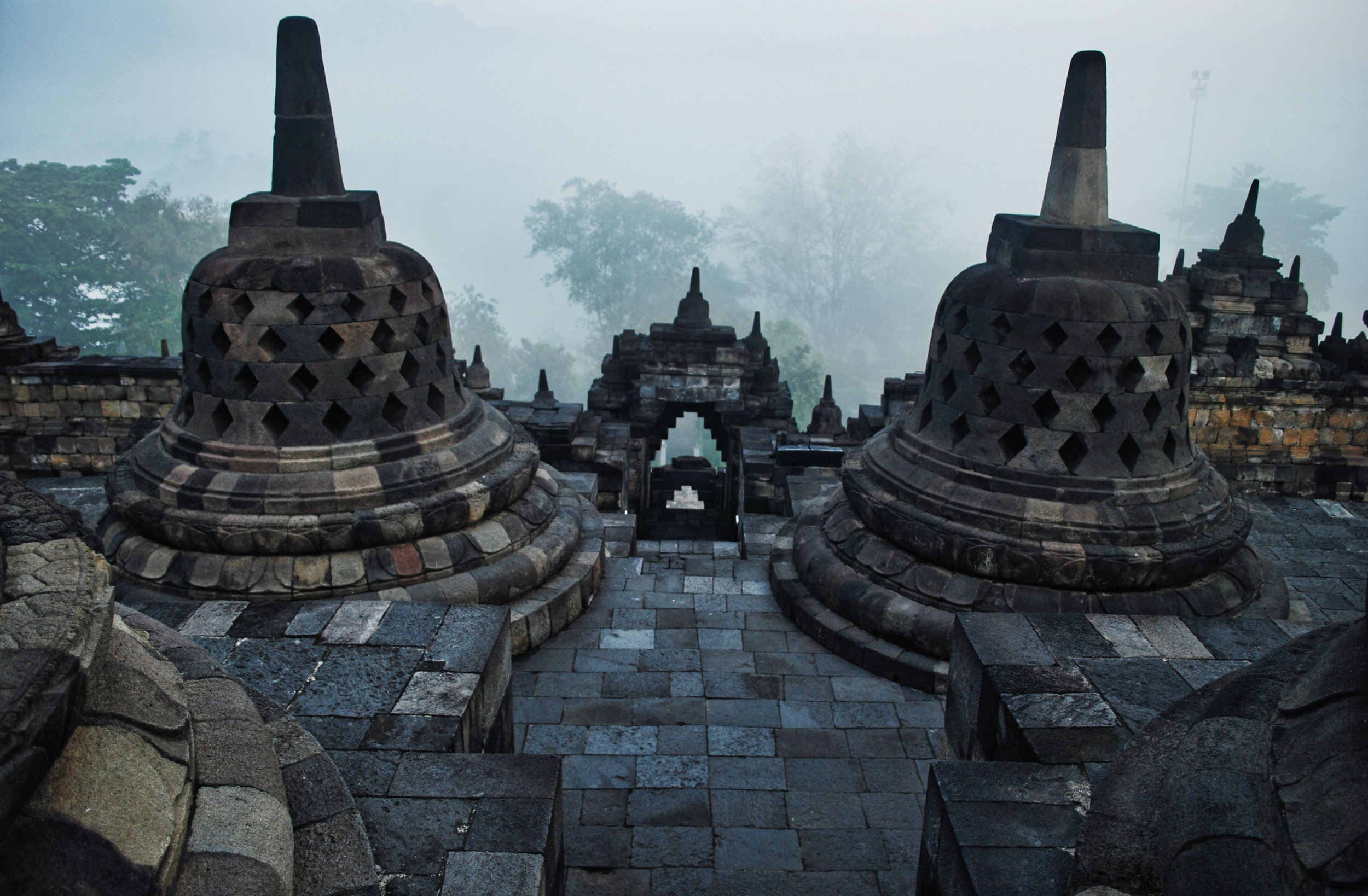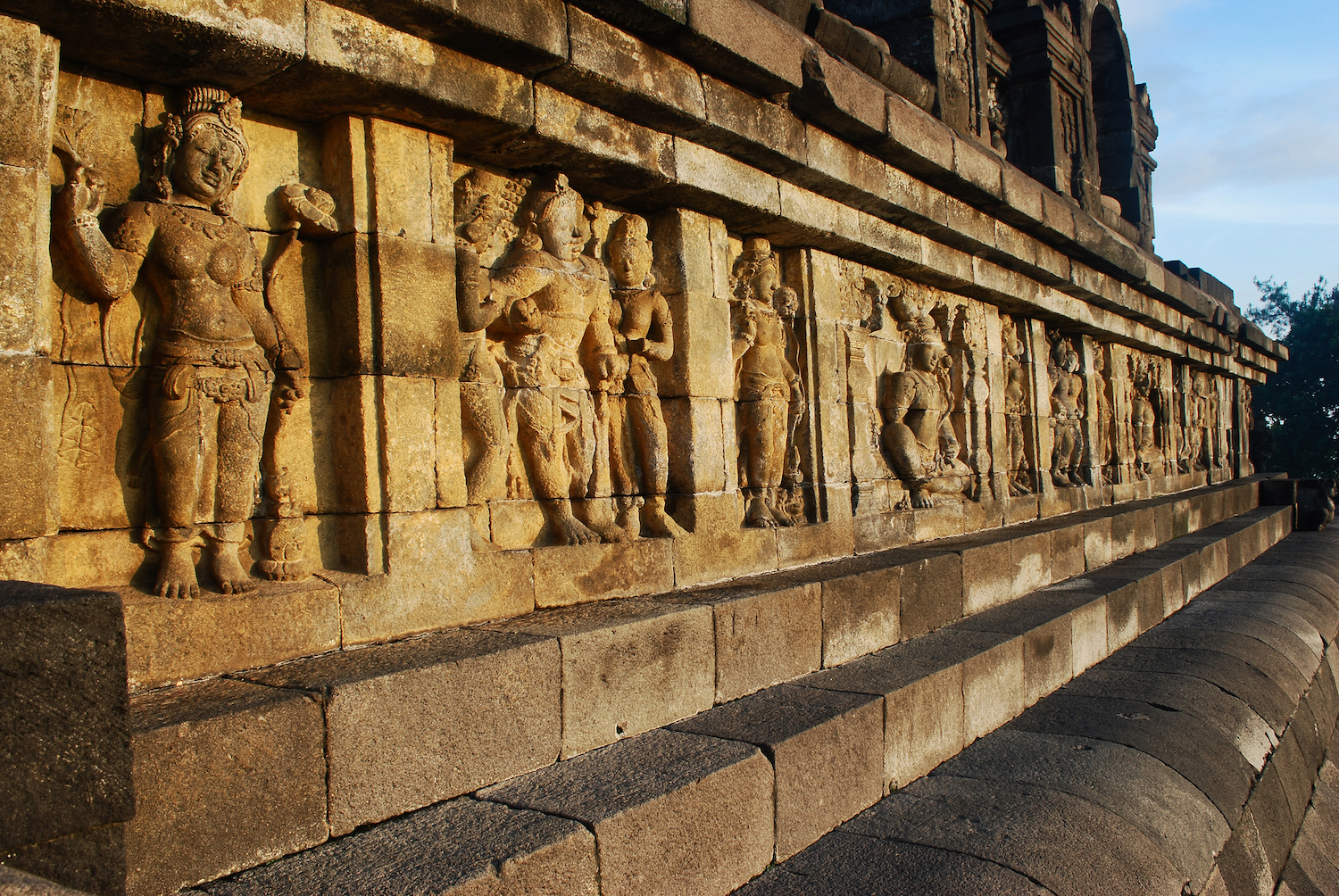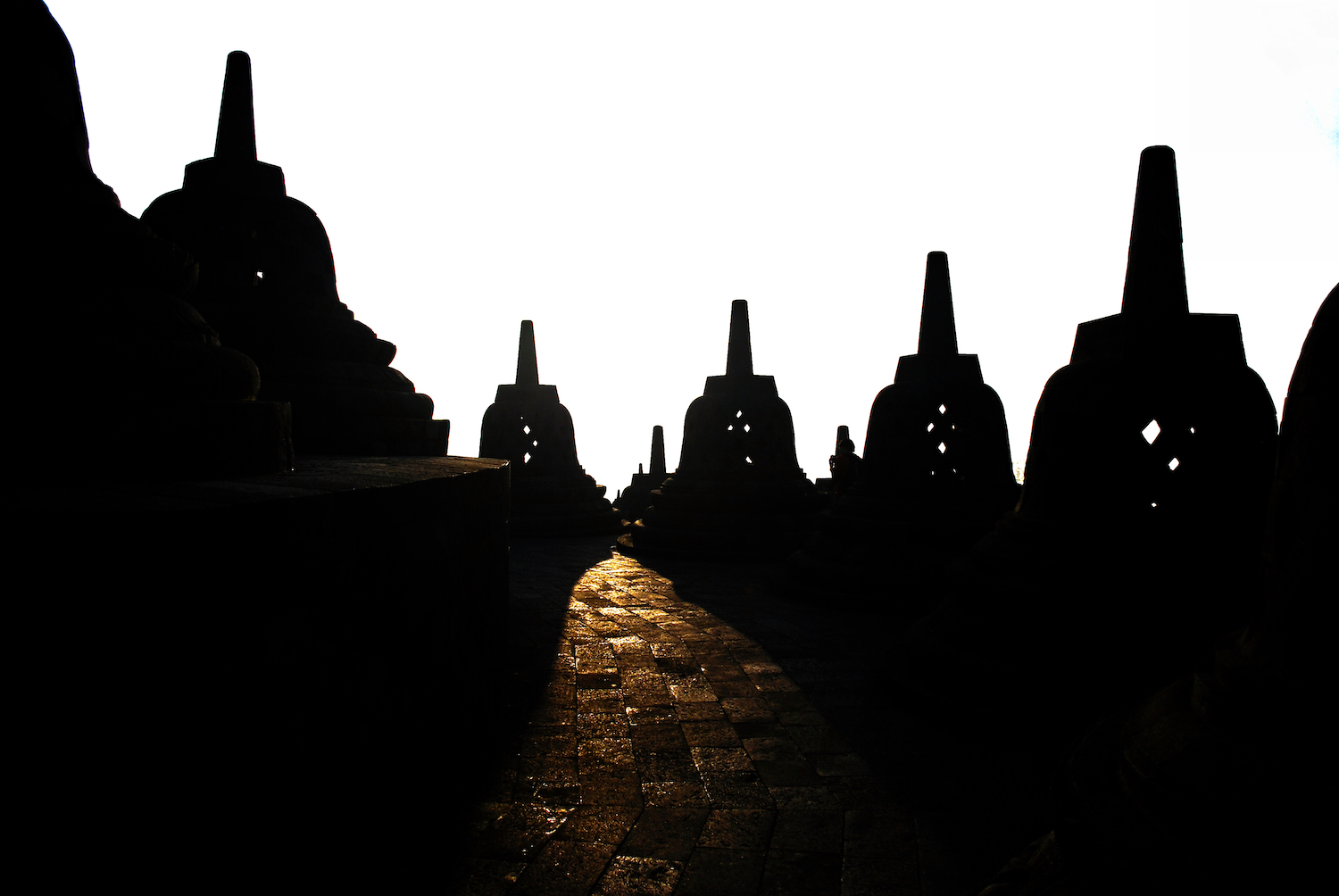45 - The Literal Path (Borobudur, Java, Indonesia)
A metaphysical journey to Enlightenment? Just tell me where to sign. Ain’t no “I” in team. Actually, there ain’t no “I” at all. So, get over your “self”, run toward the light, and quell thy fire for desire.
by The Nostomaniac
I RETURNED TO YOGYAKARTA AFTER HIKING MERAPI and spent the rest of that day resting and relaxing. Tuckered out. That was me. I went to bed at a reasonable hour and set out the next morning for Borobudur, the ancient Buddhist monument in Central Java. A quick buzz took about an hour on the Phantom. Brevity was welcome as I was still tuckered. Less tuckered, but still tuckered.
Borobudur is the most famous tourist attraction in Indonesia. We’re talking millions of visitors each year. It’s often compared to Bagan in Myanmar and Angkor Wat in Cambodia on the grandiloquence scale. Why? Well, being the largest Buddhist temple in the world helps. And yes, it’s as impressive as it sounds though all that impressiveness can get lost in the mass tourism oppressiveness. If memory serves, I chose a hotel in the village that offered an early-bird special, i.e. exclusive tickets to enter before the general hordes invade. Worth it? Sure. Still too many stragglers for total enchantment, but the play of light and mist with the rising sun can just about get you to that higher plane.
What the hell is it? Temple? Stupa? Shrine? Mountain? It don’t know what the hell it is. Mostly Buddhist. Distinctly Indonesian. Hindu flaring in between. What does the name “Borobudur” signify? Who the hell knows? When was it built? Who the hell knows? Best guess? Around 800 C.E… probably. Why was it built? Who the hell knows? Why was it abandoned from 1000 C.E onwards only to be rediscovered in 1814? Who the hell knows? I like mystery in my meat.
Ideally, I would engage a flux capacitor (it’s what makes time travel possible) and travel back thirty or forty years, before Borobudur’s fame, and wander the site for days with an expert guide or enough knowledge to soak the majesty and grandeur out of it. I had to settle for a morning trot through the metaphorical stages of enlightenment wallowing in ignorance.
A three-dimensional mandala. That’s what it is. Who wouldn’t jump at the chance to explore a microcosm of the universe? A circular path up nine platform stacks guides you along your path to enlightenment culminating at the large central stupa representing the enlightened mind. That sounds good. I’ll have that.
For much more information, go here (Wikipedia), here (Encyclopedia Britannica), or here (Khan Academy). Too lazy? Here’s an excerpt from an essay on KhanAcedemy.org written by Robert E. Gordon:
“While the sheer size and scope of a mandala structure such as this makes the site worthy of admiration, it is important to understand how the experience of Borobudur relates to the philosophic and spiritual underpinnings of the Buddhist religion it reifies and commemorates. Since its inception, roughly 2500 years ago, Buddhism has directly engaged what it sees as the paradoxical nature of human existence. The most essential tenet the religion promulgates is the impermanent, transient nature of existence. Transcendental wisdom via the Dharma (the Noble Eight-Fold Path) hinges on recognizing that attachment to the idea of a fixed, immutable “self” is a delusion.
Enlightenment entails embracing the concept of “no-self” (anattā), understood to be at the heart of eliminating the suffering and dissatisfaction (dukkha) of sentient beings. This is the ultimate message expressed in the sacred scriptures that are solidified in artistic magnificence along the stone walls and railings of Borobudur. The physical movement of circumambulating the structure symbolizes the non-physical—or spiritual—path of enlightenment. In a real sense, then, the concept of path within Borobudur monumentalizes the impermanent. Like a river that is never the same from moment to moment, to physically move along the path while meditating on the spiritual message of the sutras is meant to help one fully embrace the Buddha’s paradoxical message of impermanence.
The texts illustrated on the walls refer to pathways as well. For instance, the Gandavyuha Sutra forms a major segment of the temple’s upper galleries. The last chapter of a larger text called the Flower Garland Sutra, it relates the story of Suddhana, a youth who commences a journey to meet fifty-three teachers while seeking the path to enlightenment. The concept of “path” is a central theme in the text. He eventually meets an enlightened being (bodhisattva) named Samantabadhra. Excerpts from the larger sutra illustrate the concepts under discussion:
“I will lead those who have lost their way to the right road. I will be a bright light for those in the dark night, and cause the poor and destitute to uncover hidden treasures. The Bodhisattva impartially benefits all living beings in this manner.
I vow to shut the door to evil destinies and open the right paths of humans, gods and that of Nirvana.
Once any sentient beings see the Buddha, it will cause them to clear away habitual obstructions. And forever abandon devilish actions: This is the path traveled by Illumination.
Sentient Beings are blinded by ignorance, always confused; the light of Buddha illuminates the path of safety. To rescue them and cause suffering to be removed.
All sentient beings are on false paths—Buddha shows them the right path, inconceivable, causing all worlds to be vessels of truth…’
The idea of moving from the darkness into the light is the final element of the experience of Borobudur. The temple’s pathway takes one from the earthly realm of desire (kamadhatu), represented and documented on the hidden narratives of the structure’s earthbound base, through the world of forms (rupadhatu) as expounded on the narratives carved along the four galleries set at right angles, until one finally emerges into the realm of formlessness (arupadhatu) as symbolized and manifested in the open circular terraces crowned with 72 stupas.
However, the symbolization of enlightenment these stupas represent is not intended to be merely aesthetic. Buddhist stupas and mandalas are understood as “spiritual technologies” that harness spiritual “energies” in the creation of sacred space. The repetition of form and the circumabulatory progress of the pilgrim mimic, and thereby access, the cosmological as a microcosm. The clockwise movement around the cosmic center reproduces the macrocosmic path of the sun. Thus, when one emerges from the dark galleries representing the realms of desire and form into the light of the “formless” circular open air upper walkways, the material effect of light on one’s physical form merges concomitantly with the spiritual enlightenment generated by the metaphysical journey of the sacred path.
Light, in all its paradoxes, is the ultimate goal. The crowning stupa of this sacred mountain is dedicated to the “Great Sun Buddha” Vairocana. The temple sits in cosmic proximity to the nearby volcano Mt. Merapi. During certain times of the year the path of the rising sun in the East seems to emerge out of the mountain to strike the temple’s peak in radiant synergy. Light illuminates the stone in a way that is intended to be more than beautiful. The brilliance of the site can be found in how the Borobudur mandala blends the metaphysical and physical, the symbolic and the material, the cosmological and the earthly within the structure of its physical setting and the framework of spiritual paradox.”
Translation? Borobudur is pretty fucking awesome. I ambled and strolled until the masses intervened, choosing to retreat at the influx. Come armed with background knowledge or a kick-ass guide brimming with expertise and you could “squander” a few days with ease. My visa was a ticking bomb, so I kept on trucking. Felt right at the time, but with hindsight…
*Drone footage courtesy of Studio Sunday.






